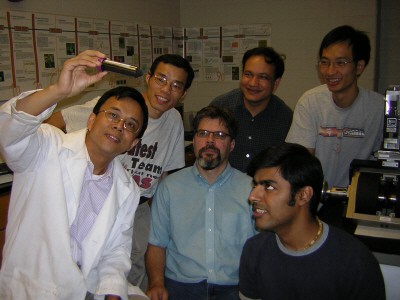Physicists in the US have developed a simple way to make nano-sized particles with potentially useful magnetic properties. J Ping Liu and colleagues at the University of Texas at Arlington added ordinary table salt to particles of iron-platinum particles and then heated them to produce nanoparticles that could be used as building blocks for magnetic recording media and in biomedical applications.

In 2000, Shouheng Sun and colleagues at IBM created iron-platinum particles that were just 4 nm across. This was a breakthrough because the face-centred tetragonal (fct) form of iron-platinum has excellent magnetic properties, such as a high coercivity — the magnetic field needed to reduce the magnetization of the material to zero. However, the particles produced by the IBM team had a face-centred cubic (fcc) structure, which is not so useful for applications. Although it is possible to convert the fcc phase into the fct phase by heating it, this also causes the particles to sinter and form larger particles, which renders the material useless for applications.
Liu and co-workers have now overcome this problem by adding a small amount of finely ground salt (sodium chloride) to the iron-platinum particles before they are heated (J. Phys. D38 2306). The salt keeps the iron-platinum nanoparticles apart so that they can undergo the phase transformation to the fct structure without sticking together and sintering. The team have produced particles with diameters of between 4 and 15 nm that have coercivities in excess of 3 Tesla. “For such small particles this is quite a remarkable result,” says Kevin O’Grady of York University.
“Sodium chloride is an ideal medium since it is chemically stable up to the annealing temperatures and can be easily removed completely just by washing the particles in water,” Liu told PhysicsWeb. “Moreover, production of the fct particles with this method can be easily scaled up and is very economic — we tested with salt from a supermarket and it worked well.”



